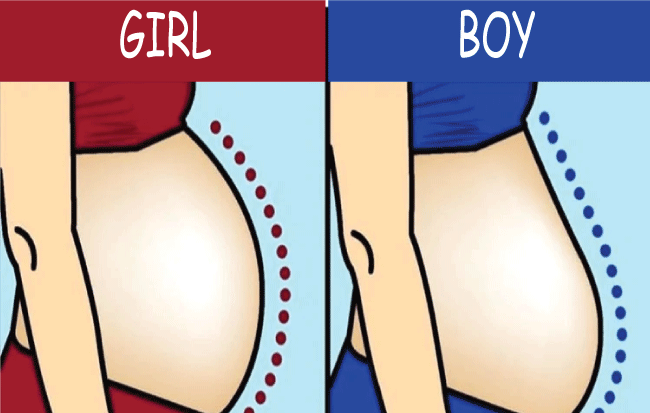Difference between Boy and Girl BumpsThe visible spread of a woman's belly during pregnancy is called a "bump" in many contexts. "Boy bumps" & "girl bump" are standard terms for the size and form of a pregnant woman's belly, which some people believe might predict the sex of the unborn child. This can begin to be apparent between 12 to 16 weeks of pregnancy. As the fetus develops, the uterus expands to make room for it, which allows the belly to expand outward progressively. The skin and muscles of the abdomen are stretched, which causes the uterus to grow and create this bump. 
One widespread myth is that the shape of the bump may determine the baby's gender. Some people believe that a bump with a rounder, more symmetrical shape denotes a girl, whereas a bump with a bump with a greater protrusion at the front denotes a boy. A "female bump" is considered smaller and higher, whereas a "boy bump" is bigger and lower. However, it's not a reliable method of determining the gender of the baby because bump size varies significantly from woman to woman or pregnancy to pregnancy. In reality, genetic testing or ultrasound are the only ways to identify a baby's gender. These methods are far more reliable than attempting to determine the shape and position of the bump. Below are some main differences between boy and girl bumps according to the above information:-
ConclusionIn conclusion, there isn't any scientific justification for the assertion that "boy bumps" & "girl bumps" differ significantly from one another. There is no accurate technique to tell the sex of a baby just on the look of the mother's bump, despite the belief of some that certain elements, such as the size or form of the bump, might reveal the gender of the child. Medical testing, like amniocentesis or ultrasound, is the only method to be assured of a baby's sex.
Next TopicDifference Between
|
 For Videos Join Our Youtube Channel: Join Now
For Videos Join Our Youtube Channel: Join Now
Feedback
- Send your Feedback to [email protected]
Help Others, Please Share










